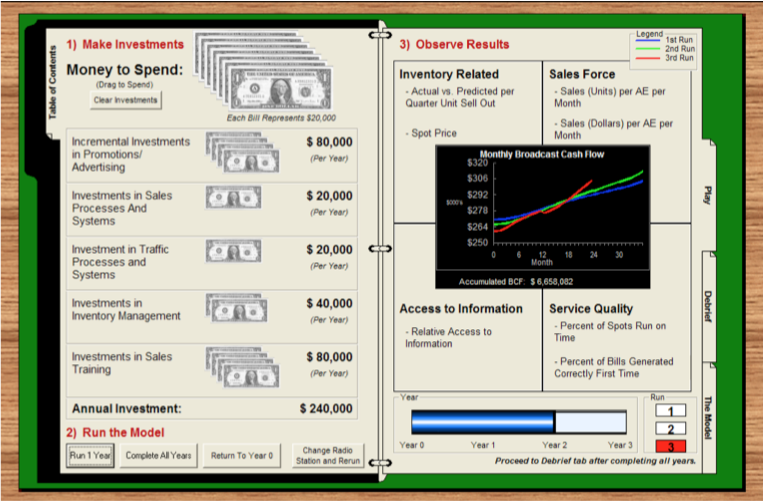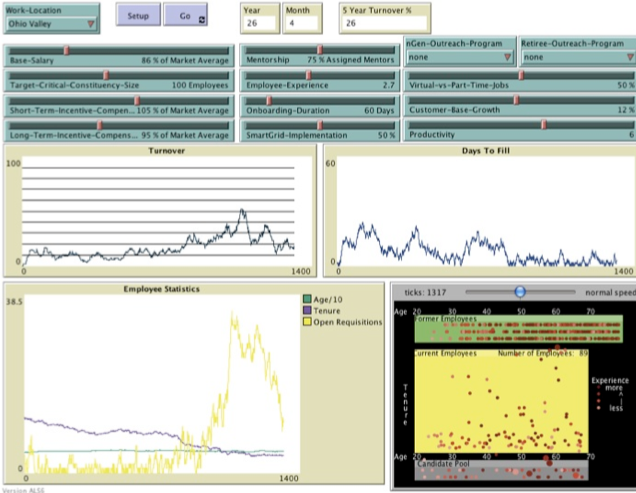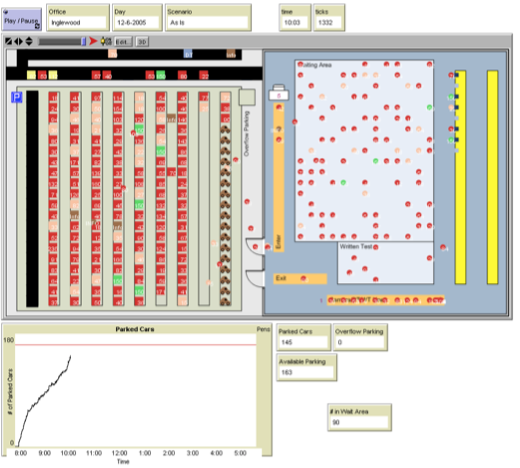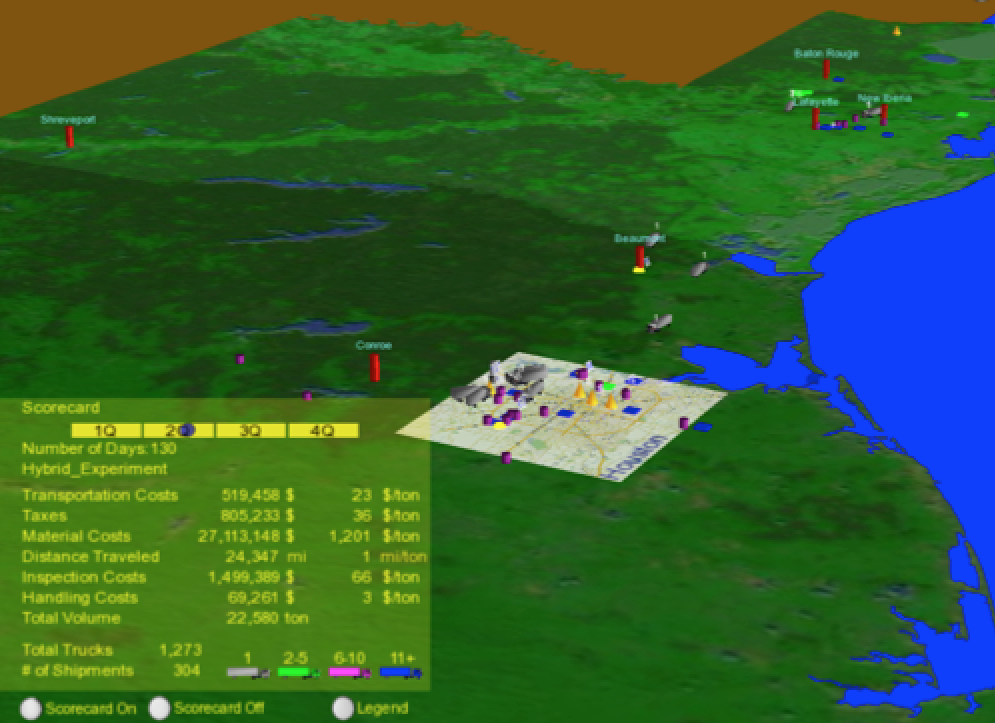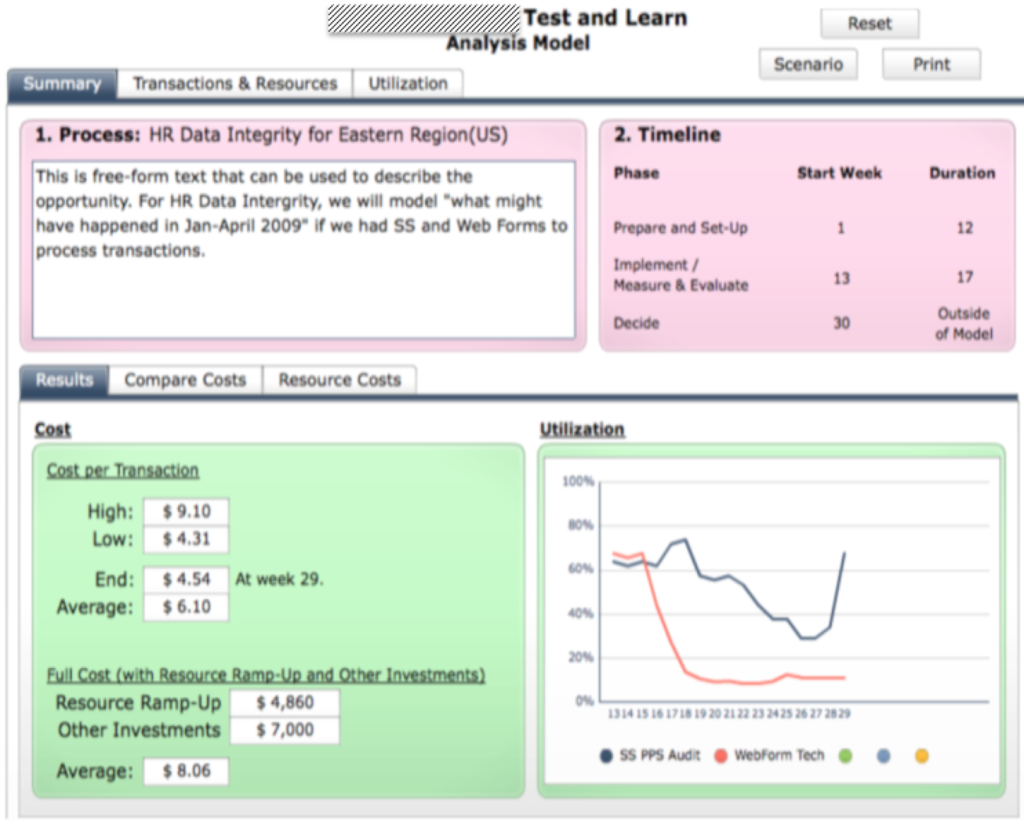
Examples of Client Work
A. Leveraging Investments and Economies of Scale
Challenge: Client wanted to capitalize on recent mergers and acquisitions.
Complexity: How do we take advantage of economies of scale?
How do I institutionalize new ways of thinking about who we are?
Solution: We built a management flight simulator to help decision-makers understand the options and investments that were previously unavailable. The application was presented as a “management game” that allowed managers to run the operations, make decisions, and compare results.
B. Workforce Planning
Challenge:
A utilities client wanted to understand and make policy decisions around a key position in the workforce.
Complexity:
This need for this position was expected to be high demand; however, fewer workers were acquiring associated skills.
Solution:
By using a model that simulated the workforce, the client was able to run experiments and “what-if” scenarios. They were
able to balance multiple objectives (service quality, overall costs, risks, overall image, etc.).
C. Customer Service, Operations, and Facilities Management at State Department of Motor Vehicles
Challenge:
Lack of parking and increased wait time caused political and dollar costs.
Complexity:
This is a highly political situation, with union labor, mandates from the governor. There were hundreds of locations and
planning had to span decades.
Solution:
Using agent-based modeling, we built a model that incorporates actual data from the existing queuing system. The model
allowed what-if experiments, including new experiments that could be designed in the future
D. Materials Management, Site Locations, and Supply Chain
Challenge:
A “super major” oil company wanted to investigate a complex supply chain to support some key decisions.
Complexity:
Conducting a pure numerical analysis did not yield the type of insight that was required for the problem. In addition, client needed a tool to communicate the analysis with different stakeholders.
Solution:
A visual 3D animated model allowed the client to ask the right questions and communicate key decision elements to a
wide audience.
E. Modeling Cost and Value of a Shared Service Organization
Challenge:
Shared Service organization wanted to understand and enable managers to articulate costs and benefits to business unit leaders.
Complexity:
Some services were economies of scale plays. Some services requires specialized skills. It was difficult to credibly credibly articulate quality of service.
Solution:
We built a generic model that worked for a variety of services provided (and to be provided) by Shared Services. The tool allowed Shared Service managers to model costs through different transaction volumes. The model accounted for efficiencies and learning over time and inefficiencies with low volume. The model also allowed different staffing options.
